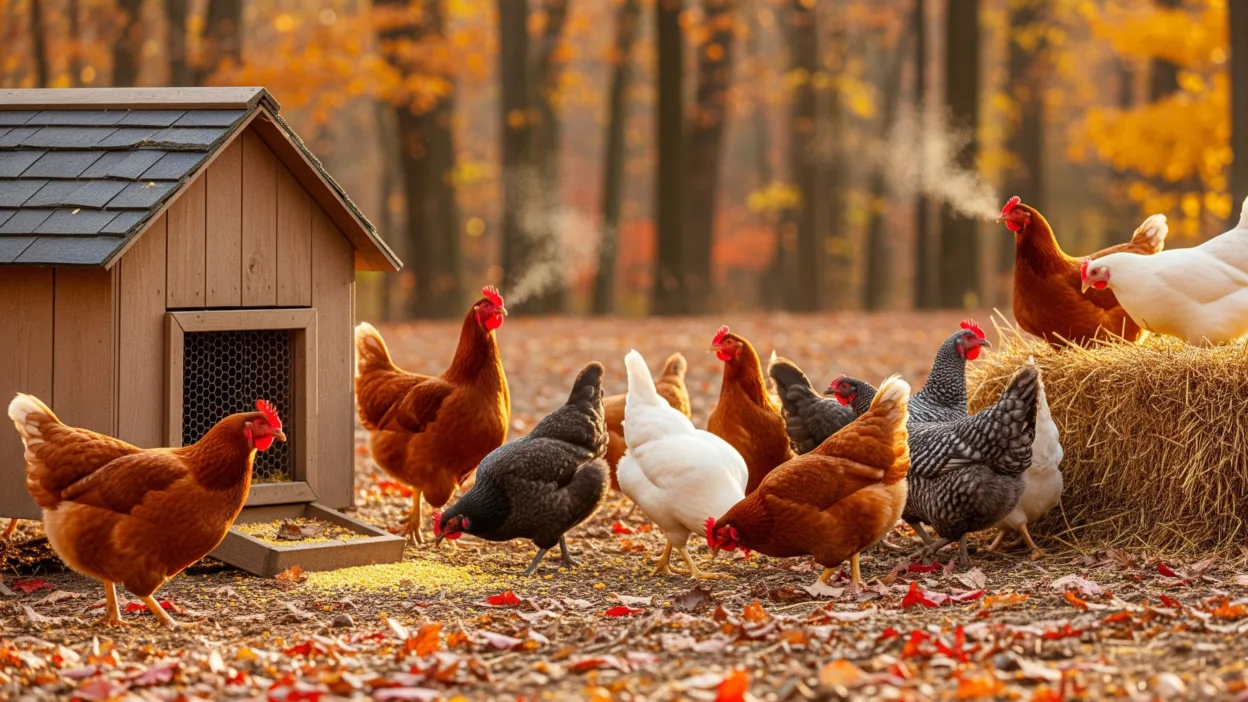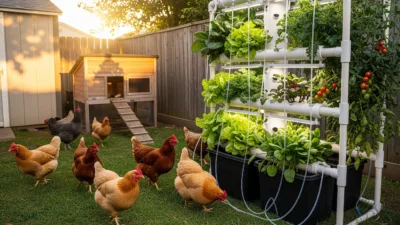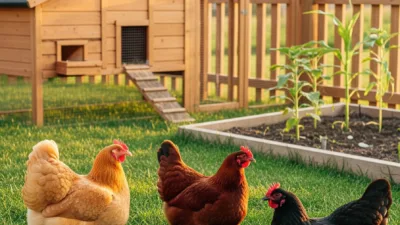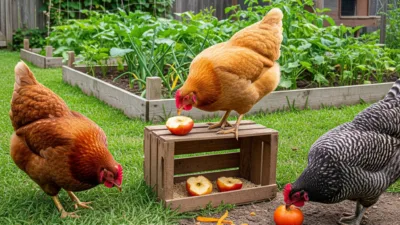As the crisp air of fall arrives, backyard chicken keepers across the United States start preparing their flocks for the cold months ahead. Fall is the perfect time to set your coop, chickens, and routines in order before winter fully sets in. While chickens are naturally hardy animals, preparing in advance ensures they stay healthy, productive, and stress-free when temperatures drop.
This guide will walk you through step-by-step fall preparation for your flock, covering everything from coop maintenance to nutrition, molting, and winter egg production strategies.
Why Fall Preparation Matters for Chickens
Chickens thrive in cooler weather compared to extreme summer heat, but winter presents unique challenges:
- Cold stress can affect their immune systems.
- Frozen waterers limit hydration.
- Reduced daylight hours slow egg production.
- Drafty coops increase illness risk.
By prepping in fall, you set up a smooth transition into winter, ensuring that your flock is comfortable and continues laying consistently.
1. Deep Clean and Inspect the Coop
Fall is the ideal season to give your chicken coop a full clean-out before winter makes it harder.
Steps for fall coop cleaning:
- Remove all bedding, droppings, and dust.
- Scrub floors, walls, and nest boxes with a mild vinegar solution.
- Inspect for cracks, holes, or leaks and seal them.
- Replace bedding with fresh pine shavings or straw.
This deep clean reduces bacteria and pests before chickens spend more time inside the coop during winter.
2. Improve Coop Insulation Without Sacrificing Ventilation
When prepping for winter, many chicken keepers mistakenly seal their coops too tightly. While insulation is important, ventilation is equally critical. Moisture from chicken breath and droppings can cause frostbite if it isn’t vented out.
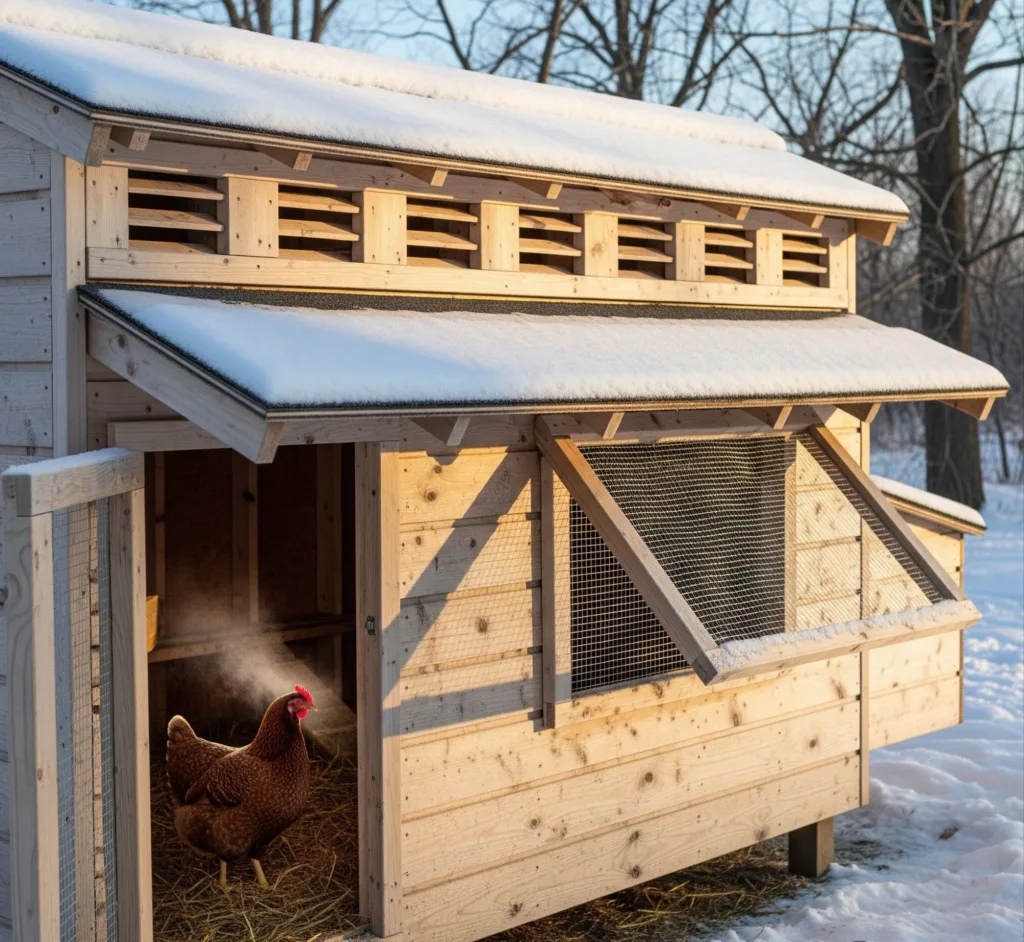
Fall coop adjustments:
- Add weatherstripping to doors and windows to block drafts.
- Use hardware cloth to cover vents, never close them completely.
- Hang heavy-duty tarps or windbreaks around runs to reduce chill.
- Add extra bedding to floors for insulation.
Think of your coop as a balance between warmth and airflow.
3. Prepare the Water System for Freezing Temperatures
Frozen water is one of the biggest issues chicken owners face in winter. Address it in fall so you aren’t scrambling later.
Water strategies:
- Invest in heated waterers or heated bases for metal waterers.
- Use rubber buckets that are easier to crack ice from.
- Position waterers inside the coop to keep them slightly warmer.
- Check and refill water multiple times daily during freezing spells.
Hydration is just as important in winter as in summer, and a proactive system prevents dehydration.
4. Adjust Chicken Diet for Cold Weather
Fall is a good time to transition your chickens to a diet that supports both warmth and consistent egg laying.
Feeding tips for fall and winter:
- Continue offering a quality layer feed as the base diet.
- Add a little cracked corn in the evening to give them extra energy overnight.
- Offer high-protein snacks (mealworms, black soldier fly larvae) during molting.
- Keep oyster shell available free-choice for strong shells.
- Supplement with leafy greens, pumpkins, and squash for vitamins.
This balance supports both warmth and continued egg production.
5. Manage the Fall Molt
Most chickens molt in the fall, shedding old feathers and growing new ones. Molting requires protein and energy, which can temporarily reduce egg laying.
Fall molt care:
- Increase protein to 18–20% in feed or supplements.
- Avoid handling birds too much since new pin feathers are sensitive.
- Keep stress low by maintaining consistent routines.
Molting may feel inconvenient, but it naturally prepares hens with fresh plumage for insulation during winter.
6. Egg Production and Supplemental Lighting
As daylight shortens in fall, hens often slow down or stop laying. This is a normal part of their cycle, but you can support production with supplemental lighting.
Lighting guidelines:
- Use a low-wattage bulb on a timer.
- Provide 12–14 hours of total light daily.
- Add light in the morning rather than at night to prevent sudden darkness.
Not all chicken keepers choose supplemental light, but if you rely on steady egg supply, fall is the time to set it up.
7. Stock Up on Supplies Before Winter
Fall is the best time to stockpile supplies while stores are still easy to access.
Supplies checklist:
- Extra bedding (pine shavings, straw, or hemp).
- Feed bags stored in rodent-proof bins.
- Poultry grit and oyster shell.
- First aid supplies like electrolytes and wound spray.
- Flashlights or solar lights for dark evenings.
Being prepared means fewer emergency trips when snow or ice hits.
8. Predator Proofing in Fall
Predators get bolder in colder months as food becomes scarce. Take time in fall to check coop and run security.
Predator-proofing steps:
- Bury hardware cloth around the perimeter to stop digging.
- Inspect doors and latches for strength.
- Add locks to coop entrances (raccoons can open simple latches).
- Cover vents with hardware cloth instead of chicken wire for durability.
This reduces nighttime stress for your flock and keeps them safe year-round.
9. Plan Enrichment and Exercise
During snowy or icy days, chickens spend more time indoors. Without stimulation, boredom can lead to feather pecking or aggression.
Enrichment ideas for winter:
- Hang cabbage heads or leafy greens in the run.
- Add logs, branches, or straw bales for perching.
- Provide dust baths indoors with sand or wood ash.
Adding enrichment in fall helps your flock transition smoothly to winter confinement.
10. Perform a Health Check Before Winter
Finally, fall is the time to give each chicken a quick health check.
Check for:
- External parasites like mites or lice.
- Signs of respiratory illness (sneezing, discharge).
- Healthy weight and feather condition.
- Proper comb and wattle color.
Treat any health issues before cold weather sets in, since sick chickens struggle more in winter.
Conclusion
Fall is more than just a beautiful season of changing leaves, it’s the foundation for a successful winter with your backyard flock. By cleaning the coop, boosting ventilation, adjusting diets, managing molting, securing water systems, and predator-proofing, you ensure your chickens are ready to face the challenges of freezing temperatures.
With smart planning, your flock will remain healthy, cozy, and productive all winter long. Fall preparation is not just about survival, it’s about giving your birds the best care so they thrive year-round.
